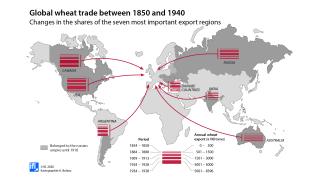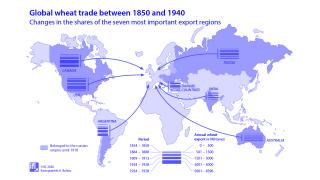Topic
Global Trade
As part of researches into Eastern Europe’s trade relations with other parts of the world from the late 19th century to the present, this section particularly analyses the politics of foreign trade and infrastructure as essential elements of East-European positioning strategies within economic globalisation.

Eastern Europe in Global Trade: The Politics of Foreign Trade and InfrastructureThe significant increase in international commodity trading represents an essential trait of processes of economic globalisation. These researches target Eastern Europe’s trade relations with other parts of the world and especially analyse how the parameters have been shaped, e.g. through providing infrastructures, as well as the regulation of foreign trade. They analyse trade and the politics of trade and infrastructure in various situations of historic upheaval: (1) the development of a global market for bulk goods as part of the global condition since the 1870s; (b) the changes caused by the nation-state building, protectionism, Great Depression and first attempts at international regulation of the 1920 and 1930s; (c) the socialist states caught between Comecon’s efforts at integration and the simultaneous intensification of economic relations to the ‘West’ and ‘Global South’ in the 1960s and 1970s. For all three periods, these researches aim to answer how well and with what strategies actors from the East-European periphery succeeded in influencing processes of economic globalisation.

